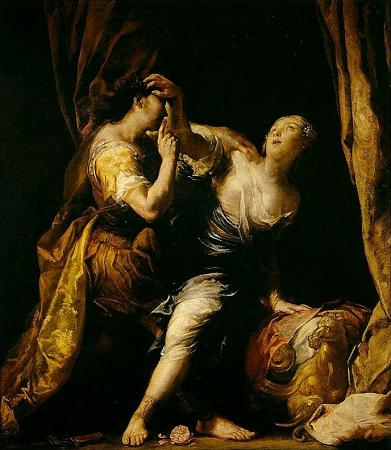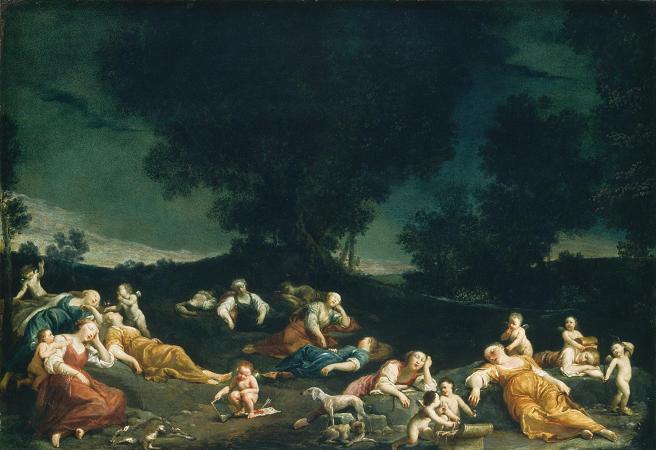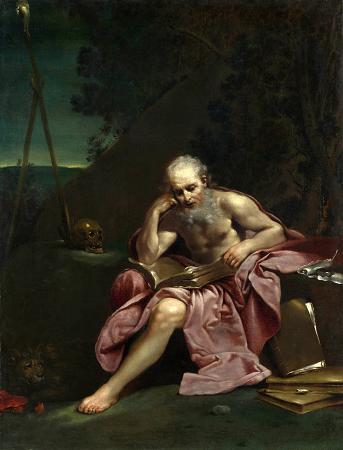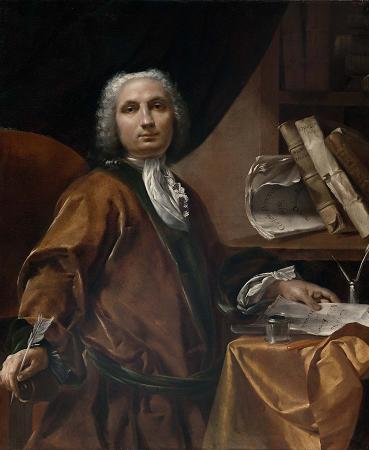Giuseppe Maria Crespi (1665 - 1747). Giuseppe Maria Crespi, nicknamed Lo Spagnuolo, was an Italian late Baroque painter of the Bolognese School. His eclectic output includes religious paintings and portraits, but he is now most famous for his genre paintings. Giuseppe Crespi, together with Giambattista Pittoni, Giovan Battista Tiepolo, Giovan Battista Piazzetta, Canaletto and Francesco Guardi forms the traditional great Old Masters painters of that period. Crespi was born in Bologna to Girolamo Crespi and Isabella Cospi. His mother was a distant relation of the noble Cospi family, which had ties to the Florentine House of Medici. He was nicknamed the Spanish One because of his habit of wearing tight clothes characteristic of Spanish fashion of the time. By age 12 years, he apprenticed with Angelo Michele Toni. From the age of 15-18 years, he worked under the Bolognese Domenico Maria Canuti. The Roman painter Carlo Maratti, on a visit to Bologna, is said to have invited Crespi to work in Rome, but Crespi declined. Maratti's friend, the Bolognese Carlo Cignani invited Crespi in 1681-82 to join an Accademia del Nudo for the purpose of studying drawing, and he remained in that studio until 1686, when Cignani relocated to Forli and his studio was taken over by Canuti's most prominent pupil, Giovanni Antonio Burrini. From this time hence, Crespi worked independently of other artists. His main biographer, Giampietro Zanotti, said of Crespi: never again wanted for money, and he would make the stories and caprices that came into his imagination. Very often also he painted common things, representing the lowest occupations, and people who, born poor, must sustain themselves in serving the requirements of wealthy citizens. Thus it was for Crespi himself, as he began a career servicing wealthy patrons with artwork. He is said to have had a camera optica in his house for painting. By the 1690s he had completed various altarpieces, including a Temptation of Saint Anthony commissioned by Count Carlo Cesare Malvasia, now in San Niccolo degli Albari. He journeyed to Venice, but surprisingly, never to Rome. Bearing his large religious canvas of Massacre of the Innocents and a note from Count Vincenzo Rannuzi Cospi as an introduction, Crespi fled in the middle of the night to Florence in 1708, and gained the patronage of the Grand Duke Ferdinand I de' Medici. He had been forced to flee Bologna with the canvas, which while intended for the Duke, had been fancied by a local priest, Don Carlo Silva for himself. The events surrounding this episode became the source of much litigation, in which Crespi, at least for the next five years, found the Duke a firm protector. An eclectic artist, Crespi was a portrait painter and a brilliant caricaturist, and was also known for his etchings after Rembrandt and Salvator Rosa. He could be said to have painted a number of masterpieces in different styles. He painted few frescoes, in part because he refused to paint for quadraturists, though in all likelihood, his style would not have matched the requirements of a medium then often used for grandiloquent scenography. He was not universally appreciated, Lanzi quotes Mengs as lamenting that the Bolognese school should close with the capricious Crespi. Lanzi himself describes Crespi as allowing histurn for novelty at length to lead his fine genius astray. He found Crespi included caricature in even scriptural or heroic subjects, he cramped his figures, he fell in to mannerism, and painted with few colors and few brushstrokes, employed indeed with judgement but too superficial and without strength of body. One celebrated series of canvases, the Seven Sacraments, was painted around 1712, and now hangs in the Gemeldegalerie, Dresden. It was originally completed for Cardinal Pietro Ottoboni in Rome, and upon his death passed to the Elector of Saxony. These imposing works are painted with a loose brushstroke, but still maintain a sober piety. Making no use of hieratic symbols such as saints and putti, they utilize commonplace folk to illustrate sacramental activity. The Seven Sacraments Crespi is best known today as one of the main proponents of baroque genre painting in Italy. Italians, until the 17th century, had paid little attention to such themes, concentrating mainly on grander images from religion, mythology, and history, as well as portraiture of the mighty. In this they differed from Northern Europeans, specifically Dutch painters, who had a strong tradition in the depiction of everyday activities. There were exceptions: the Bolognese Baroque titan of fresco, Annibale Carracci, had painted pastoral landscapes, and depictions of homely tradespeople such as butchers.
more...













